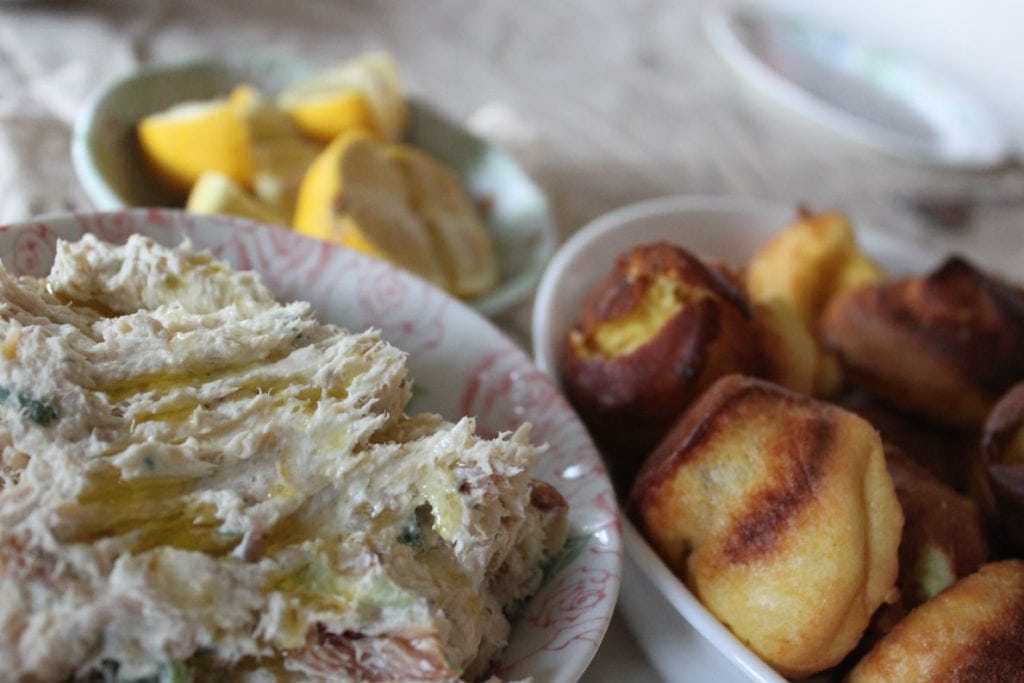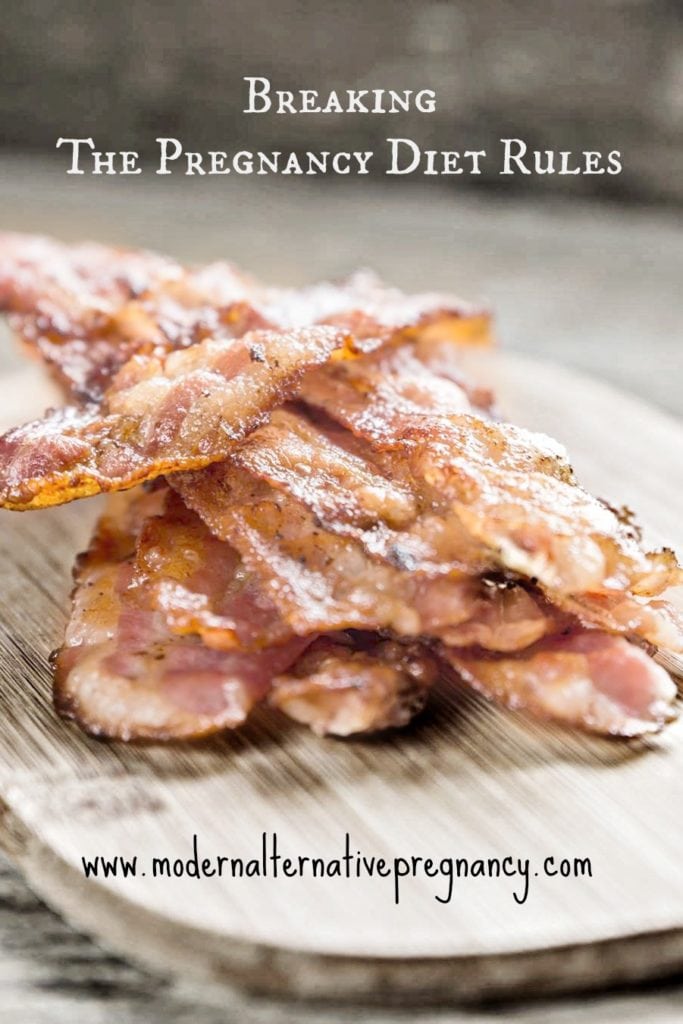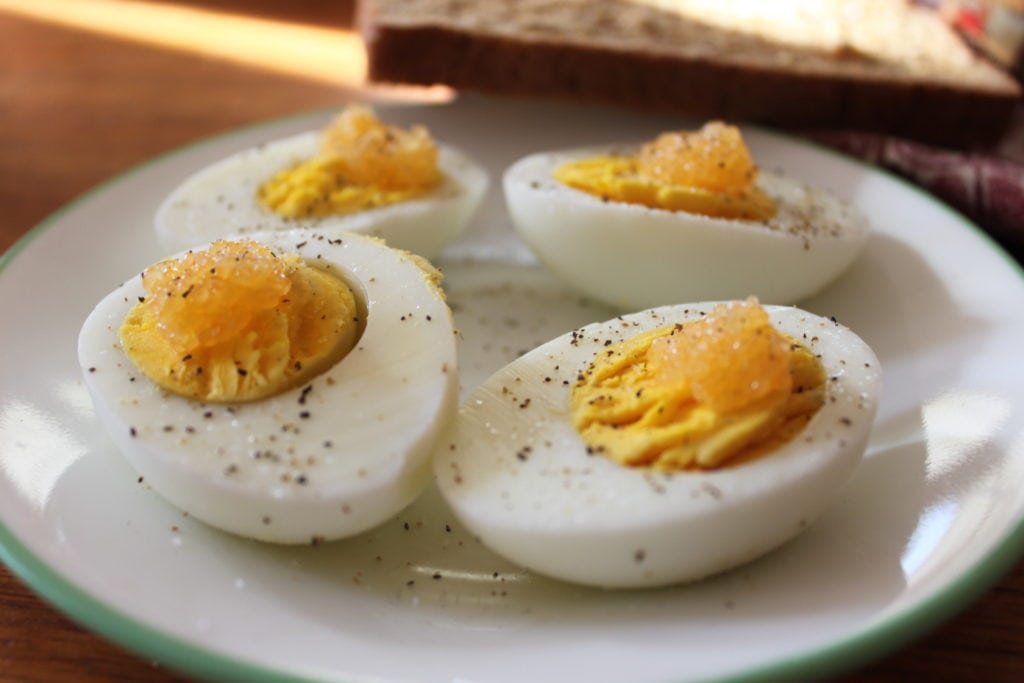Modern advice vs. ancient wisdom: what pregnancy diet rules do we really need to follow? Read on to learn what rules I broke and why.
By Daja, Contributing Writer
When I was pregnant with my fourth child I was in a network of birth professionals–childbirth educators, doulas, midwives, etc. For one of our meetings, we met at a sushi bar. I opted for something cooked (noodles or something uninspiring like that) and said something wistful to a colleague like, “Man, that looks good. I wish I could have some.” She handed it to me. I said, “I can’t. I’m pregnant.” She quickly replied, “What do you think women in Japan eat?”
We have quite a list of dos and don’ts for pregnant women. On the “Do not touch list” we have: sushi, fish in general, tons of cheeses, deli meat, raw milk, sprouts, raw juices, wine, coffee and tea, herbal teas and supplements, runny eggs, high fat, and the list goes on and on.
Enjoy that boneless skinless chicken breast and green beans. ‘Cause that’s what left. *I just lost the will to live.*
Every culture around the world has a list of pregnancy taboos. But, you know what? The taboos are not universally the same. There is a wide range of what is considered acceptable for a pregnant momma. But there are some areas of commonality, that can point us to some ancient wisdom.
Breaking The Pregnancy Diet Rules
The Work of Weston A. Price
Dr. Weston A. Price, researcher and dentist, traveled the world studying traditional diets of traditional cultures. Not only did traditional cultures feed pregnant mommas carefully, they also fed mothers AND fathers special pre-conception diets. And their outcomes were amazing. Ease of conception, healthy pregnancy, powerful labor and birth, healthy babies. Although there are several factors that contribute to this vibrant health, food definitely played a big role. Here are some of the things traditional pregnancy diets around the world had in common:
- All groups that had access to the sea used fish eggs
- All groups that had access to dairy used high-quality grass-fed milk
- All groups used liver and/or organ meats
- All diets included fermented foods
- All the diets included food from animal sources. In other words, there were no vegetarians.
What do all these foods have in common?
First of all, they are nutrient-dense. What do I mean by that? All food has calories, but all those calories are not created equal in terms of nutrition. Nutrient dense food means calories (energy) are packed with other nutrients such as vitamins, minerals and enzymes. Nutrient density also takes into consideration bioavailability. (source) Because what good is a food full of vitamins if your body can break them down and use them?
They are all also minimally processed. Meaning, they are close to their natural state, untampered with by machine, chemical or high heat. This leaves nutrients intact.
All these foods are also high in fat (with the possible exception of the fermented foods, although things like yogurt, kefir, cultured butter, etc. can be both fermented and high in fat). The human brain is nearly 60% fat! Fat is essential for body processes such as digestion, transport, conversion, and energy extraction. Fat contains nearly 3 times the energy stores than glucose. (source)
Now compare these traditional guidelines to what you typically see today in books and websites for pregnant women. The advice you see today is to eat lean meat and dairy, lots of raw fruits and vegetables and whole grains. But traditional people ate fatty organs, meat with the fat left on, full-fat dairy, fermented vegetables and fruits, and if they included grains at all they were soaked, sprouted or fermented.
My Own Experience
Well, these things certainly break the mold for pregnancy diets in the United States! But, guess what? I’ve tried it (to the best of my ability) and it works! With my first seven pregnancies, I experienced so many of the typical pregnancy discomforts: muscle cramps, heartburn, swelling, cravings. Between number seven and number eight I drastically changed our family’s diet, thanks in part to the inspiration of the Weston A. Price Foundation. My next two pregnancies (number eight and number nine) have been my most healthy, my most vibrant and my most surprising! No muscle cramps, no cravings, no swelling. Blood pressure on point. Wow!
Here are the pregnancy diet rules I broke with links to why I broke them. Ready?
Raw Dairy
I switched to raw milk, raw butter and cream. (Read Raw Milk Reality.) Yes, I did raw dairy while pregnant! And it was amazing how it made me feel! I never once have gotten sick. In fact, now we have our own cow and the whole family is able to enjoy as much raw dairy as they want.
Bone Broth
I started drinking bone broth daily. (And eliminated muscle cramps in the process) This was one of the easiest, but must impacting changes in our diet. Now a day hardly goes by that we don’t have broth in some form. Thanks to the bone broth and the raw dairy I consumed so much more magnesium, which was a key factor in eliminating morning sickness!
Added Organ Meats
I started prioritizing organ meats over apples. (And perfected my Chicken Liver Pate recipe in the process!) Admittedly, this change was more difficult. It was mostly a mind thing. The meat tasted delicious and we put it in all kinds of things from chili to tacos. We enjoyed it plain as pate spread on crackers or sourdough bread. It was mostly a matter of getting over the idea of eating liver, kidney, heart, tongue, etc. Such a sad reputation these nutrient dense foods have gotten.
Drank Wine (In Moderation!)
I allowed myself wine when pregnant. (Read Take Back Pregnancy) Yes, I really did. Just a bit with dinner. It actually helped so much with digestion. No stomach upset or heartburn that has been a pregnancy complaint since forever. Also, towards the end of pregnancy when Braxton-Hicks contractions got to be too much and I just could not sleep, a little glass of my favorite red would help my uterus and nerves calm down enough to get a decent sleep.
Ate Fish
I ate fish on a regular basis (including lots of fish roe). (Read Should We Avoid Fish Because of Mercury?) I love my fish. But, fear of fish had caused me not to indulge in my first few pregnancies. Learning the role of selenium (found abundantly in many kinds of fish) allowed me to enjoy without anxiety.
High Fat, Low Carb
I ate a high fat, low carb diet. (Read Powerhouse Foods Your Doctor Probably Forgot To Mention and 5 Reasons You Should Eat Fat When Pregnant) Isn’t fat what makes food so delicious to begin with? Think of all the things you love (well, I do at least!): butter, whipped cream, bacon, salad dressing, olive oil on fresh bread, crispy skin on roast turkey, duck or chicken, and on and on. Fat is what makes things tasty! Fat is what makes you want to eat. Thankfully it is also the thing that stores the majority of the nutrients, gives us stored energy for between eating, and feeds our cells–including the cells of your unborn baby!
Now, in no way am I saying that you must also break these pregnancy rules. My hope is that you will do your research and make decisions about your diet that work for your family and your body. I believe that your intuition as a mother (and as a human!) can tell you what foods make you feel good, vibrant, energetic and happy. Likewise you know which foods don’t digest well, make you feel sluggish, lack in necessary oomph. You know. Listen to your body. Research, research, research. And then be confident in your decisions.
What pregnancy diet rules have you broken?
SaveSave
SaveSave
SaveSave





0 thoughts on “Breaking The Pregnancy Diet Rules”